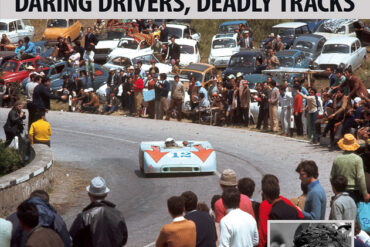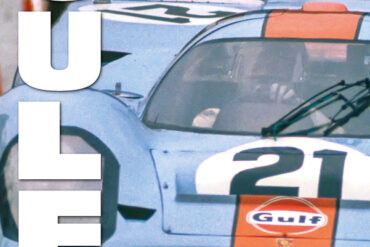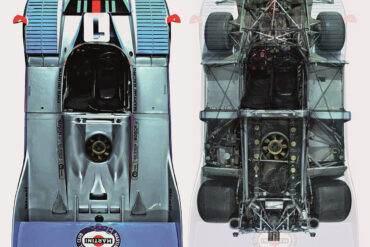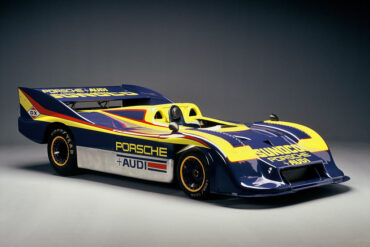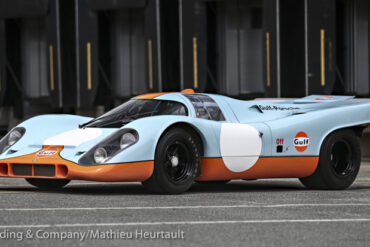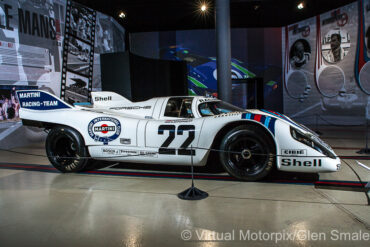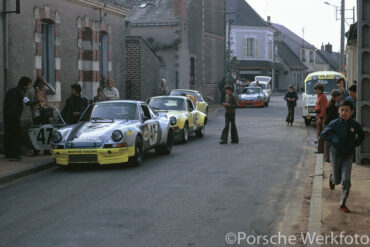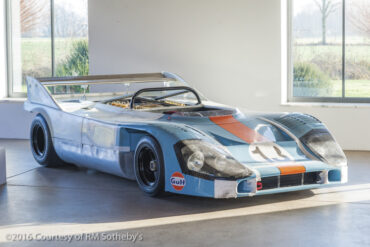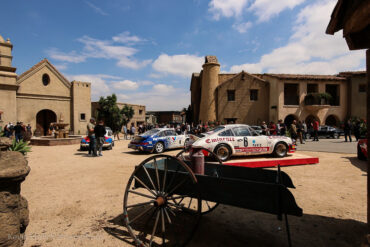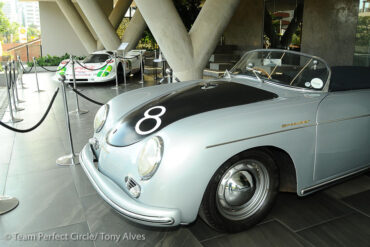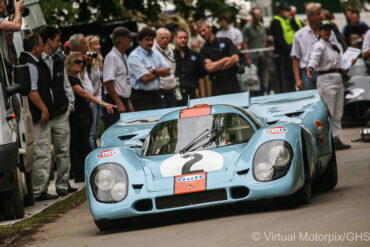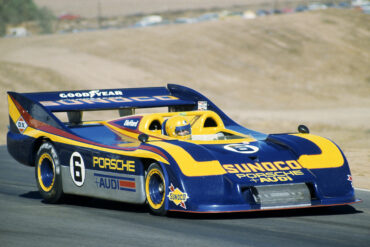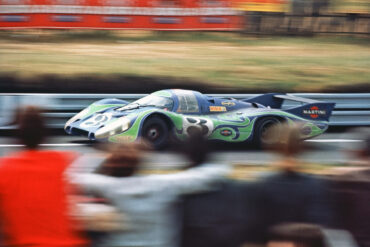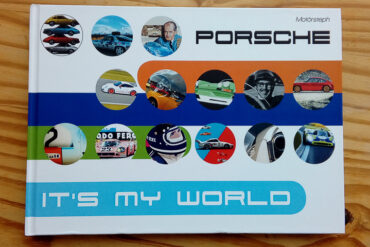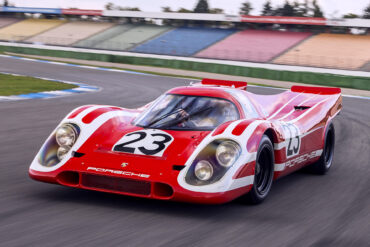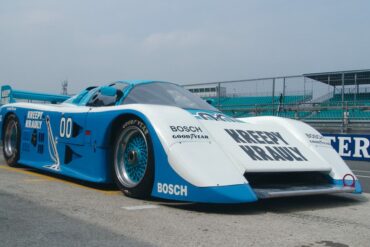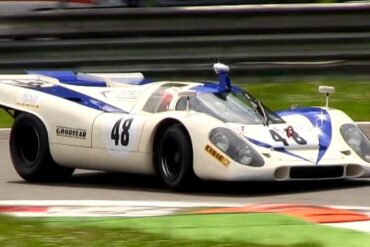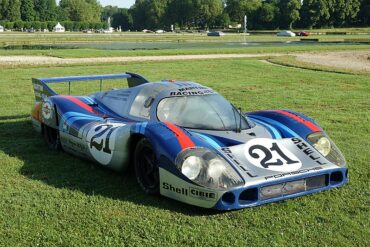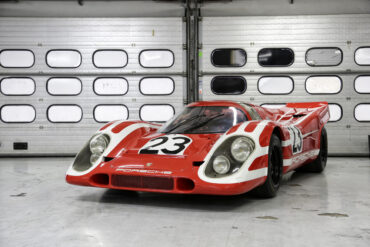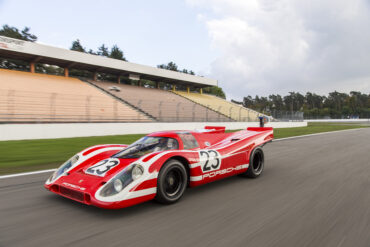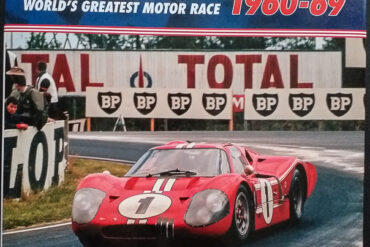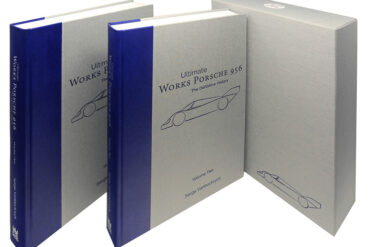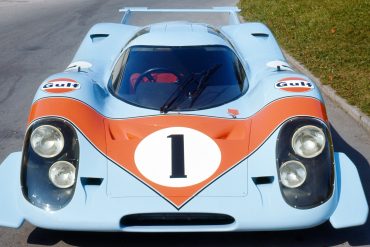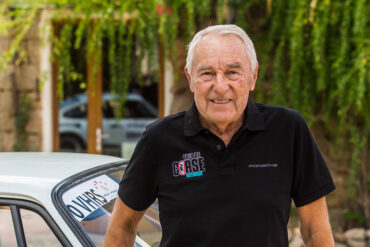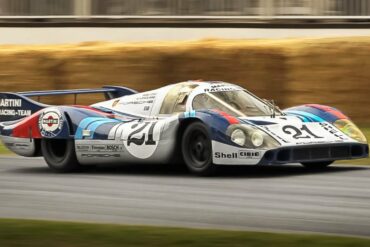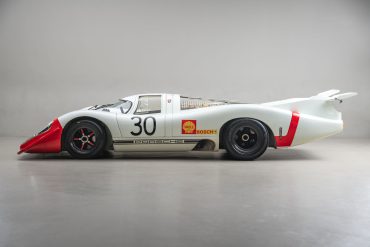Brian Redman – Daring Drivers, Deadly Tracks © EVRO Publishing Brian Redman is about as down-to-earth as they come, which...
Gulf 917 by Jay Gillotti – © Dalton Watson Fine Books There is little that you can add to the...
The 917/20 Turbo is a confusing car - its chassis number reads 917/30-001, but it is not the real 917/30. In its first race it was called as the 917/10 Turbo. Sharp eye can detect that it was not just the 917/10 Turbo, but an evolution of it. At the same time it was not the evolution of the 1971 Le Mans 917/20. Still, the car should not be called as the 917/30 to distinct it from the "real" 917/30 Can-Am racers and in 1974 it was decided to call it as the 917/20 Turbo.
The final evolution of the 917 was created after Ferdinand Piëch had left the Porsche company in 1972. Two complete 917/30 Can-Am cars with 2500 mm (98.4") wheelbase were made for Roger Penske Enterprises racing team. They were chassis 917/30-002 and 003. The 001 car was not a real 917/30 and was raced in Europe at the Interserie. The Can-Am 917/30 had a 5.4-litre flat 12-cylinder twin-turbo engine which produced so much power that nobody really knew how much.
1970 Gulf Racing Porsche 917 K (chassis #917-024) If you would like to own a piece of motor racing history,...
ACO Museum, Le Mans 16 September 2020: As it was the 50th anniversary of Porsche’s first win at Le Mans,...
1970 Porsche 917/10 prototype chassis #917/10-001 as offered for sale on 8 February 2017 Mention the name Porsche and motor...
Luftgekühlt 6 – Porsche 356 street scene There was an obvious irony to Luftgekühlt 6. Somehow an event devoted to...
1969 Porsche 917 and 1958 Porsche 356 Speedster at The Capital hotel, Johannesburg, South Africa It’s funny how things have...
The video shows the Porsche 917 in action driven by Derek Bell. It also contains some period footage of an...
Porsche 917/30 Specifications type Racing Car built at Germany production 6 units engine Air Cooled, Magnesium/Aluminum Alloy Flat-12 position Mid...
With the aerodynamic instability of the 917 in the 1969, two separate configurations were used in 1970. These were the short-tail Kurzheck version and the less common Langheck or long-tail. Most of the 917's accolades were achieved by the 917 Kurzheck, leaving the Langheck a less popular, but ultimately just as potent contender.
Porsche – It’s My World by Stéphane Coradi © Virtual Motorpix/Glen Smale Porsche – It’s My World: what is this...
Porsche – The Golden Years: Leonardo Acerbi © Virtual Motorpix/Glen Smale It is always a pleasure when a top-quality book...
The 917 Kurzheck Coupé (917K) first appeared in 1970 and contributed more to the Porsche 917 story than any other variant. It...
I couldn’t quite pinpoint why, during the research and writing of this profile, that I kept hearing the Lennon/McCartney hit...
Porsche 917K Track Video This is a video of a 1969 Porsche 917 (chassis 025) racing at Monza Circuit during...
1971 Porsche 917 Langheck Pictures...
The 917 Kurzheck Coupé (917K) first appeared in 1970 and contributed more to the Porsche 917 story than any other variant. It was a high-down force version that featured a cut-off tail for increased downforce. This reduced the cars top speed, as much as 30 mph. Le Mans winner 1970, Interserie winner 1970 and Manufacturers' World Championship for Porsche in 1970.
Le Mans: The Official History 1960–69 by Quentin Spurring © Virtual Motorpix/Glen Smale This edition of Quentin Spurring’s fabulous series...
Works Porsche 956 – The Definitive History: by Serge Vanbockryck – © Porter Press International I met the author, Serge...
50 years of the Porsche 917 Anniversary The most famous racing car of all time made its debut at the...
Gérard Larrousse (2017) Former Porsche works driver, Gérard Larrousse, celebrates his 80th birthday on Saturday 23 May 2020. Gérard Gilles...
Racing Porsche with Style © Stéphane Coradi This is Stéphane Coradi’s third publication, and the third of his books that...
1971 Porsche 917 Langheck Specifications 4.9 L Flat 12 Engine Spec type Racing Car built at Germany engine Air Cooled...
Background The Porsche 917, unveiled in 1969, stands as a testament to Porsche’s commitment to innovation and their quest to...
No More Content


